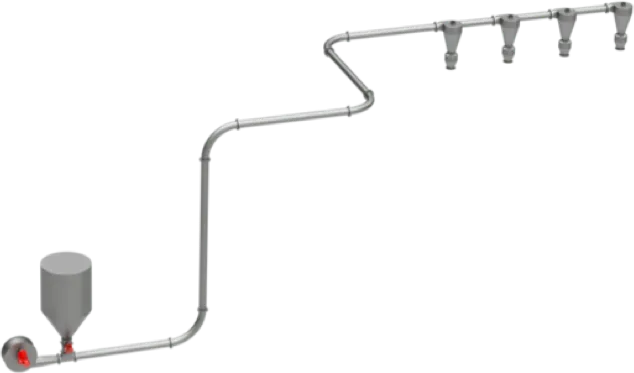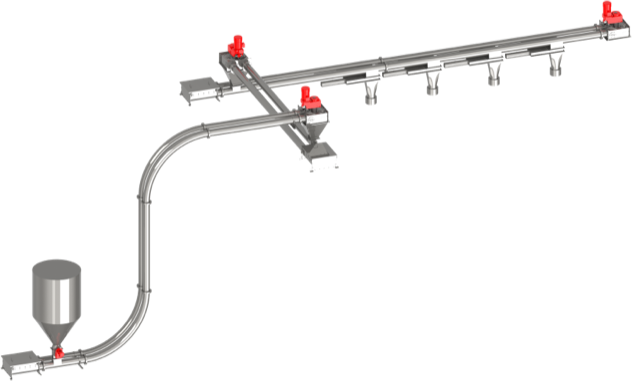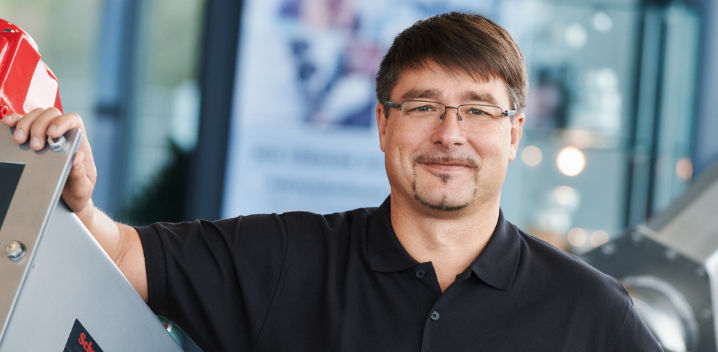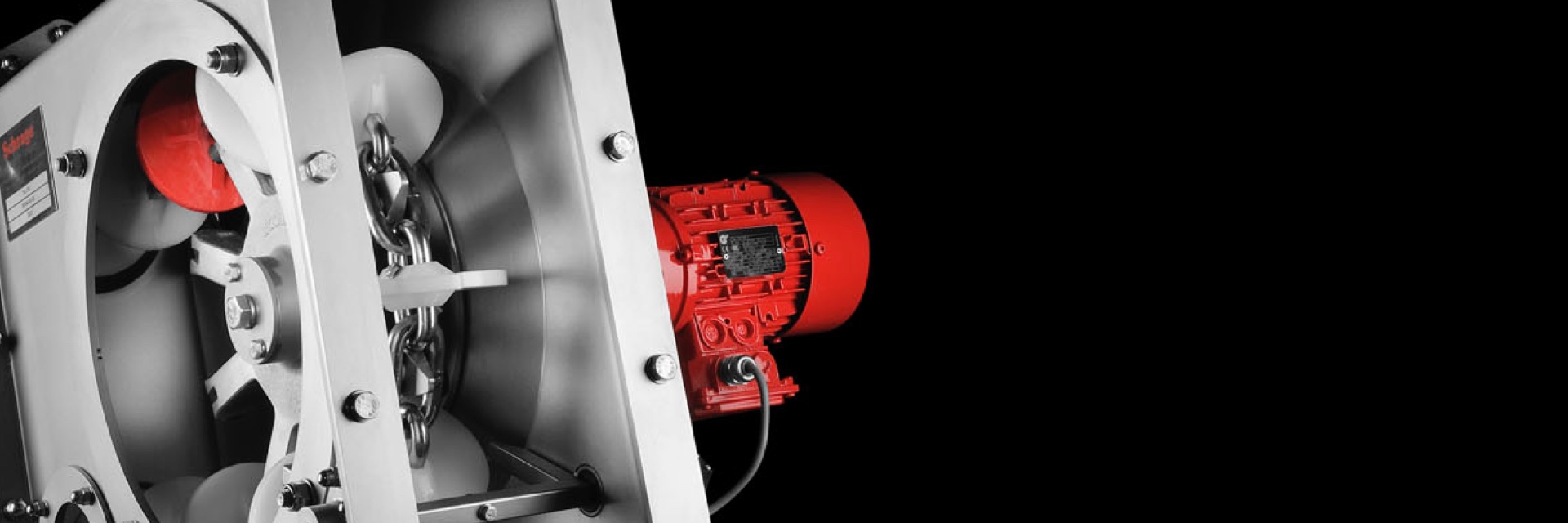
Schrage vs. Pneumatic conveyors
Pneumatic conveyor systems
- A length of 90 meters can be implemented with a single line
- Multiple cyclone separators required
- Tons of measuring and control equipment
- High air speed, resulting in greater wear and grain destruction
Tube chain conveyor
- Three tube chain conveyors are required for this line layout (90 meters)
- Low conveying speed, resulting in minor wear and grain destruction
- No filter systems or cyclone separators required, meaning that very little measuring and control equipment is required
35 years of experience with our energy-saving solution
We’ve implemented numerous projects with a much higher energy efficiency to date, with our Tube chain conveyors sometimes requiring a mere 10% of the energy that pneumatic systems consume. In other words, you can save up to 90% on energy in comparison to pneumatic systems.
Are you interested in learning more about Schrage’s energy-saving solution? We’re here for you! Simply fill out the contact form and send it to us and we’ll get back to you shortly afterwards with a quotation or consultation information.
Pneumatic conveyors are continuous conveyors for bulk material in which material is conveyed in an enclosed tube system by means of compressed air or by means of a vacuum. This type of conveyor is extremely flexible in terms of routing. Both compressed air and vacuum systems are based on the same principle, according to which solid particles—when the air velocity is fast enough—are picked up by the conveyor’s air flow and conveyed along the pipe. There are three different conveying phases that are defined based on the material’s properties, the flow medium being used, the conveyor pipe, the volumes of both the flow medium and the material being conveyed, and the shape of the pipe route:
Dilute phase conveying (stationary lean phase) when the proportion conformed by the material being conveyed is small, dense phase conveying (intermittent moving-bed and slug flow) when the proportion conformed by the material being conveyed is average, and dense phase conveying (stationary smooth slug flow) when the proportion conformed by the material being conveyed is large. Pneumatic conveyors are characterized by their simple construction, low initial costs, the fact that they require little space, and their freedom from dust. Their disadvantages consist of high energy costs, a high level of wear, and the risk of becoming clogged.
